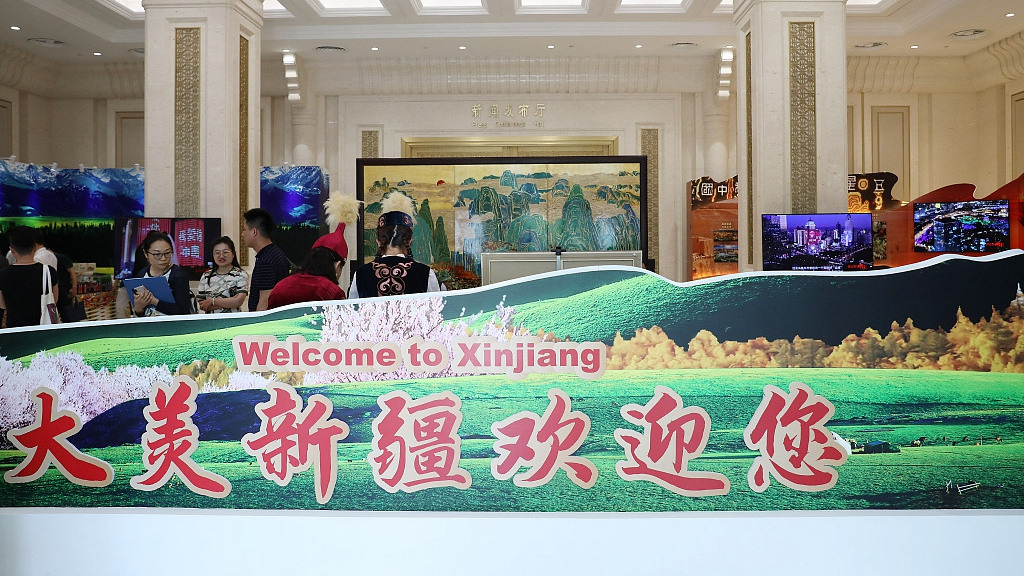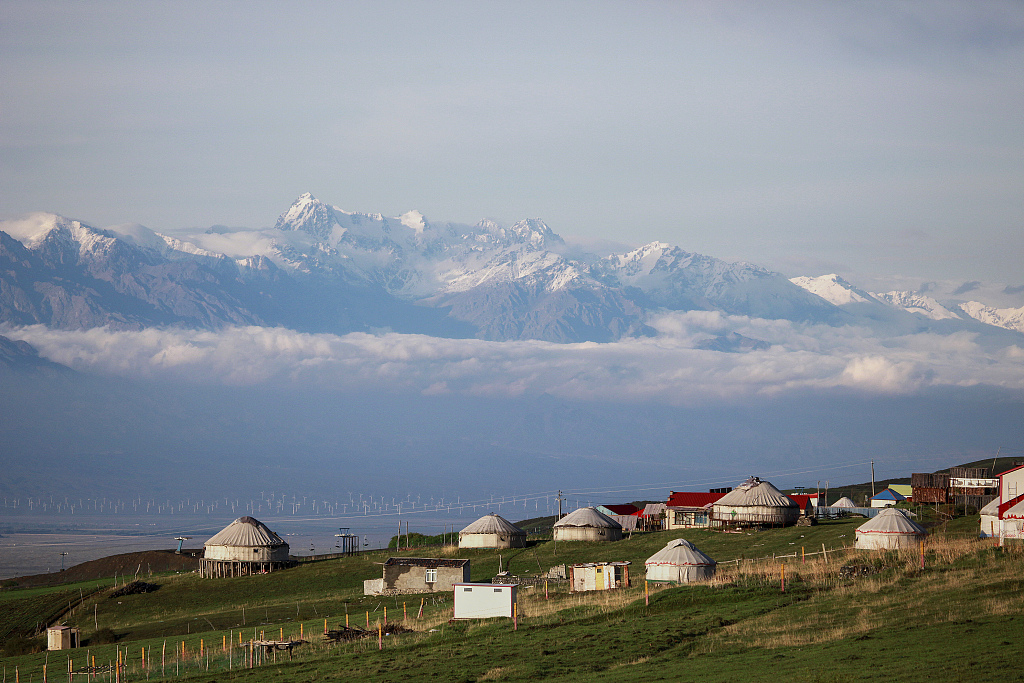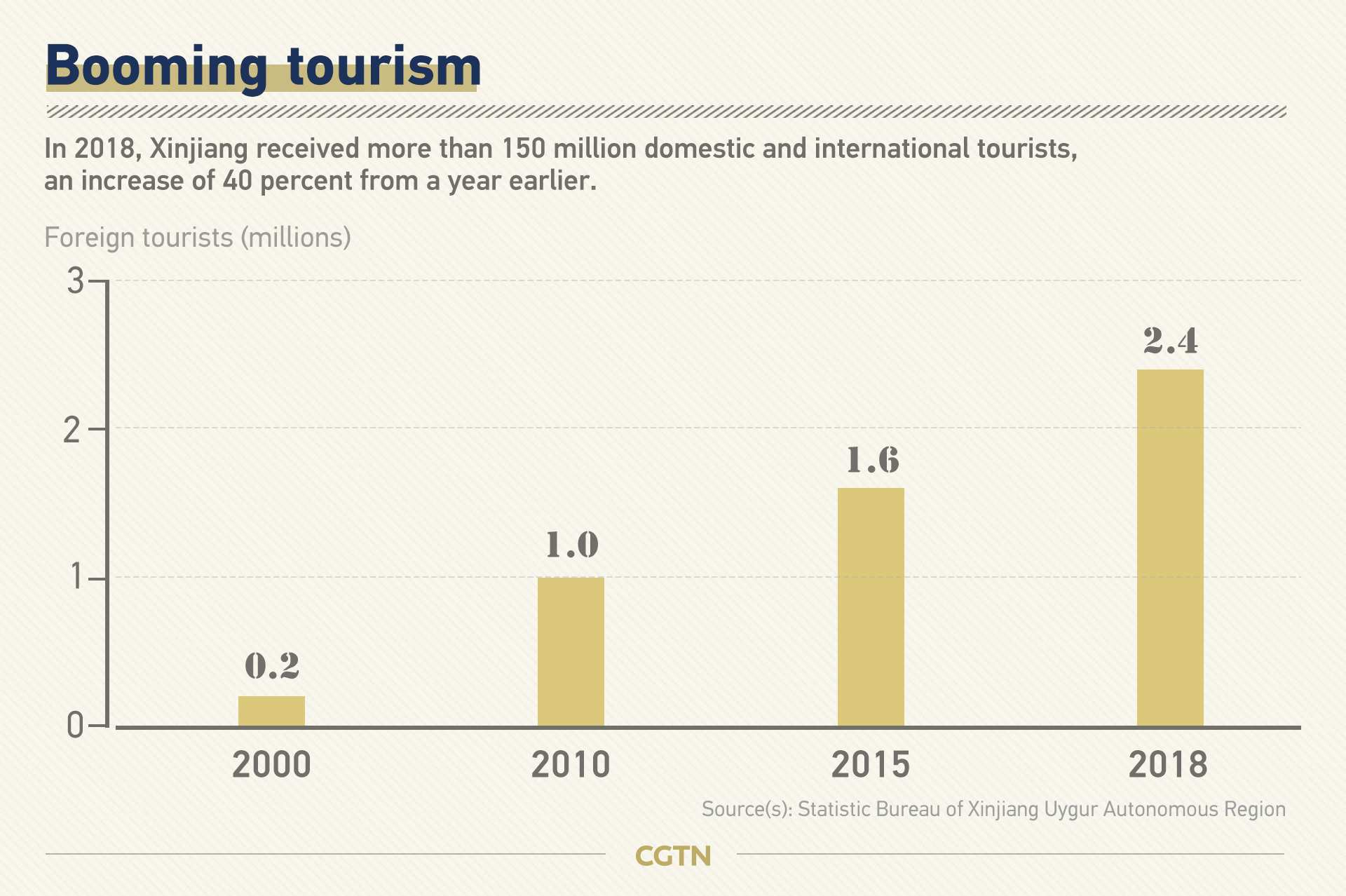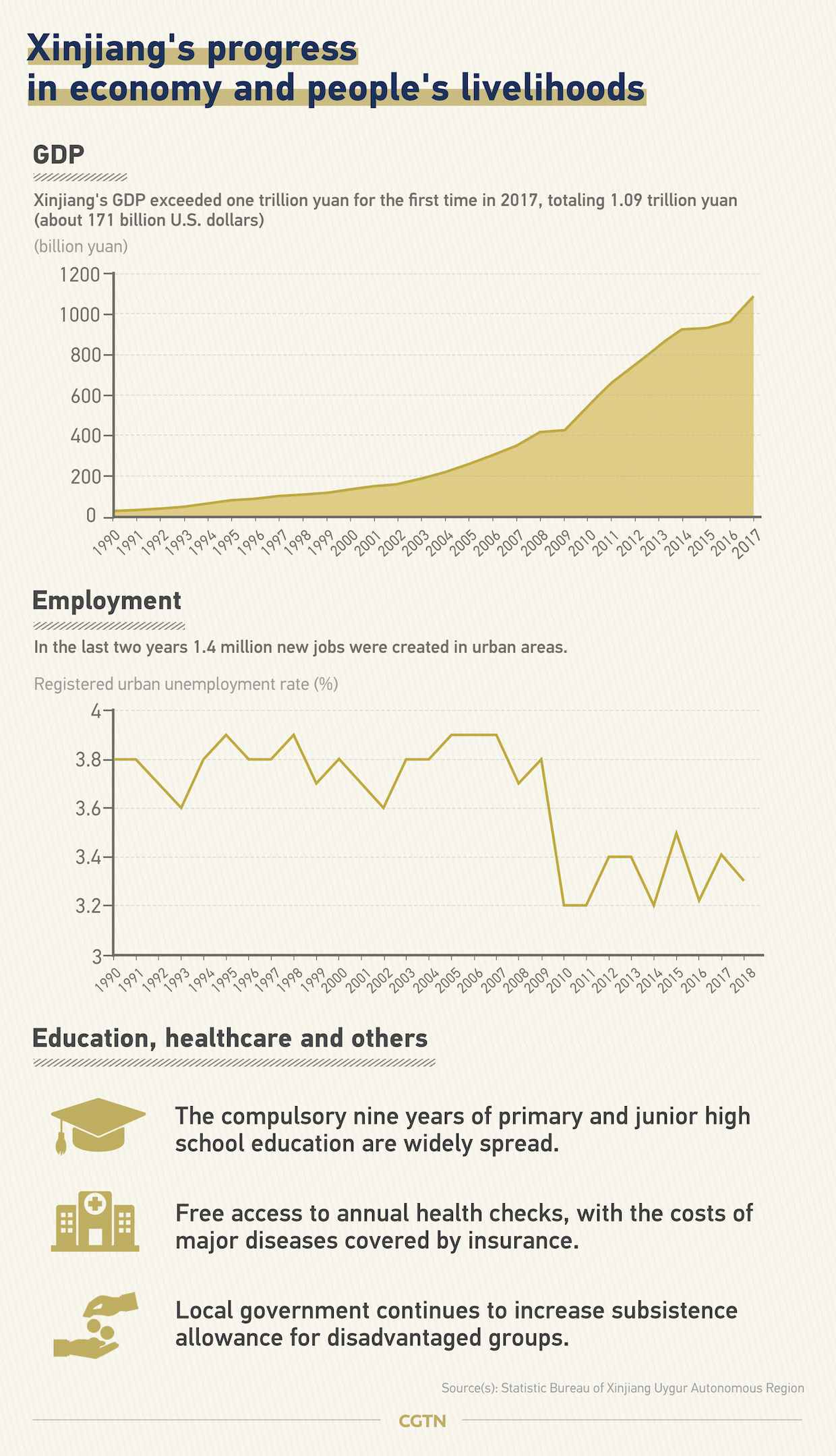

The State Council Information Office (SCIO) released a report entitled "Build a beautiful Xinjiang, realize the Chinese dream" on Tuesday, introducing the economic and social development over the past 70 years in northwest China's Xinjiang Uygur Autonomous Region.
"Earth-shaking changes have taken place in Xinjiang, and the lives of people in all ethnic groups have greatly improved," the report said.
According to the report, Xinjiang GDP rose from 791 million yuan (about 115 million U.S. dollars) in 1952 to 1.22 trillion yuan in 2018, an average annual growth of 8.3 percent.
"Per capita GDP increased 37.7 times on inflation-adjusted basis to 49,475 yuan."
Economic development realizes historic leap
As the forefront of China's westward opening-up, Xinjiang's total imports and exports exceeded 20 billion U.S. dollars in 2018, said Shohrat Zakir, the governor of the Xinjiang Uygur Autonomous Region, in a press conference on Tuesday.
"The region leads the nation in agricultural mechanization and efficient water conservancy irrigation, and has become China's biggest cotton production base," said Zakir.
A great number of water conservancy, transport and energy projects have been completed, further improving the region's infrastructure.

VCG Photo
Xinjiang's GDP increased 6.1 percent in 2018. The tertiary industry served as an important driver of economic growth, which contributed 62.3 percent to economic growth, the report said.
"Xinjiang received more than 150 million domestic and foreign tourists in 2018, a year-on-year growth of 40 percent, and 75.89 million tourists in the first half of 2019, up 46 percent year on year," said Zakir.
"With 21 civil airports, traveling in and out of Xinjiang by plane has become the first choice of many people," he added.

CGTN Photo
People of all ethnic groups mark historic improvement in livelihoods
With the rapid economic development in Xinjiang, disposable household income has experienced huge growth in recent years, lifting Xinjiang’s residents to a moderately prosperous level.

CGTN Photo
Suitable and focused policies targeting poverty-stricken areas in the four prefectures of southern Xinjiang have also seen great results. From 2014 to 2018, 2.31 million people, including 1.89 million from southern Xinjiang, were lifted from poverty.
The government spent 69.59 million yuan to relieve poverty in Xinjiang from 2014 to 2018, with emphasis on people and livelihood-centered development. More than 70 percent of the public budget expenditures in the region were spent on improving livelihoods and continuously boosting nine welfare programs focusing on employment, education, medical services and social insurance.
The infrastructure construction in Xinjiang also guaranteed a more convenient and higher-quality life for the residents in the region, the report said.
"Xinjiang has comprehensively pushed forward construction of water, electricity and road access in remote and under-developed regions, provided safe water for 10.5 million rural residents, achieved 78.3 percent tap water access in rural areas, and ended the history of a lack of electricity, tap water and transport in remote areas."

VCG Photo
Xinjiang's net enrolment ratio of school-age children used to be less than 20 percent, and the illiteracy rate was up to 90 percent and per capita life expectancy was merely 30 years.
After 70 years of development, the number of primary schools increased from 1,335 in 1949 to 3,368 in 2018, and high schools from nine in 1949 to 1,278 in 2018, said the report. The region has also “continuously improved the equalization of basic public cultural services, protected cultural heritage and driven the development of ethnic cultures.”
The prosperity and progress of Xinjiang cannot be separated from the great support of the central government and the selfless help of all Chinese, said the report.
The data shows that from the establishment of the People's Republic of China, the central government has provided 2.35 trillion yuan, including 1.61 trillion yuan alone from 2012 to 2018, as financial subsidies to Xinjiang. And since 1997, a total of 15,975 cadres have been sent to aid the autonomous region.

Copyright © 2018 CGTN. Beijing ICP prepared NO.16065310-3
Copyright © 2018 CGTN. Beijing ICP prepared NO.16065310-3